Influencer content creators are blessed with the opportunity to turn their brands into profitable businesses. Looking for an easy way to monetize your following? Start selling merch!
In this article, we’ll take a deep dive into the world of merchandising. You’ll learn everything from “why and how to create your merch” to “getting it into the hands of your loyal fans and followers.”
Let’s get started!
Why Make Your Own Merch?
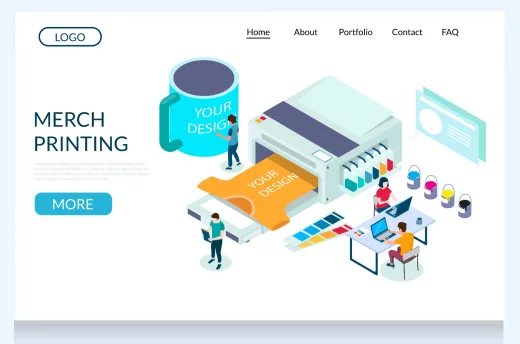
Merchandising is a powerful tool. It not only brings in money for influencers and content creators, but helps maintain the essence of a brand, and builds a stronger connection with followers. Anyone wearing merchandise becomes a walking advertisement for your brand.
Making Merch Under a Sub Brand
Being an influencer or content creator gives you access to a big audience to whom you can pitch new products.
When you’re launching any kind of merch, you can either open a separate brand or sell directly under your current brand.
If you open under a sub-brand, this allows your merch to grow beyond your personal brand although you’ll need to do its marketing separately. For example, social media influencer and YouTuber Logan Paul launched his clothing line under the sub-brand Maverick Clothing.
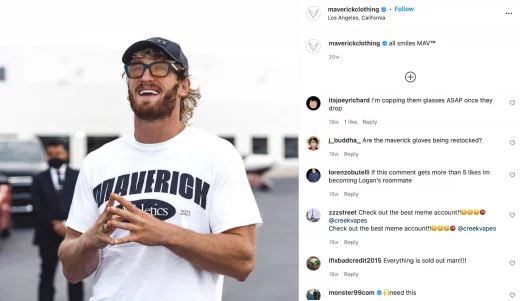
Making Merch Under Your Own Brand
Option #2 is to include merch into your existing content and sell it directly to your audiences. This is generally an easier alternative because it doesn’t require you to launch an entire standalone brand with a completely different marketing strategy.
You can simply start talking about your merch in your videos. Zach King runs his merch store under his own brand name:
How to Create Your Own Merch
1. Branding
Before getting into the creation process, it's essential to characterize your brand. Consider the values, goals, and target audience you want to include in your plan.
This characterization will facilitate the creation of merchandise that aligns with the branding and resonates with your followers.
2. Product Selection
Once we have established a clear picture for our brand, it's time to pick a product to sell. T-shirts, hats, stickers, mugs, the list goes one. Here are some ideas for you to consider:
-
Wallets. This is a great option if your audiences are primarily male. Marques Brownlee, also known as MKBHD on YouTube recently launched a matte black wallet by Trove with his branding on it.
-
Notebooks and Journals. With your branding or photo on the cover. If your audiences are into writing journals, this will make a perfect gift!
-
Coffee mugs. Have them start their morning routine with a coffee and a mug with your name on it.
-
Shirts and apparel. This one is quite common. You can drop clothing merch under your personal brand or as a standalone clothing line. Markiplier, for example, sells clothing under a separate brand called Cloak.
3. Designing your merchandise
There’s no right way to design merch. If you’re launching under your existing brand, then your designs should be a representation of your values, style, and personality. Check out sites like Dribbble for inspiration.
When designing, consider brand colors, logos, and layouts. The merchandise should reflect your brand identity. If you know how to design on Adobe Photoshop, there’s an entire world of premade vectors, libraries, and templates on the internet on sites like Freepik.
Of course, you can also hire a freelance designer on sites like Upwork or Fiverr to create your brand identity for you.
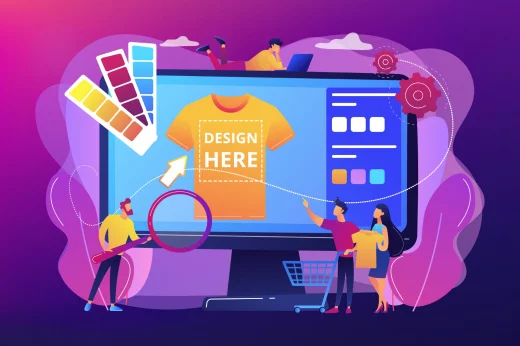
Use the following tips when finalizing a design:
- Simplicity is key. Follow the rule of “less is more.” Merchandise should be easy on the eyes. Avoid cluttered design or too much text (unless you’re specifically going for a style like that).
- Use Your Brand Colors. Your color choices are integral to your brand identity. These colors remind people of you. Use them in your merchandise to ensemble a composed look.
- Consider Your Target Audience. What will appeal to the target audience? Think carefully about designing your merchandise because that will be the voice of your brand and your fans.
- Be Unique: Avoid copying other brands or designs. Instead, create something unique to your brand that helps it stand out.
4. Manufacturers vs print-on-demand
After finalizing your designs, it’s time to think about logistics. You can either go for a manufacturer or a print-on-demand service.
Manufacturers
Find a manufacturer and send them your designs. However, this option is a bit more costly because it requires you to buy in bulk because most manufacturers don’t entertain requests for small volumes. Carefully choose a supplier that aligns with your brand, considering cost, quality, and shipping times.
Don’t just go for a random supplier from China – people won’t like it if you sell poor quality merch. Consider the following when picking a manufacturer:
- Cost. Consider the cost of materials, production, and shipping when choosing a merchandise supplier.
- Quality. The quality of the merchandise is a no-bargain factor. Choose a supplier with high-quality materials with a good reputation for quality.
- Shipping Times: You want to ensure that merchandise gets shipped quickly. Either pick a supplier in your area or work with a warehouse provider located in the same region as your target audience. If you store your merch in locations where your audience is, this will ensure 2-3 day shipping (this can increase conversion rates on your store).
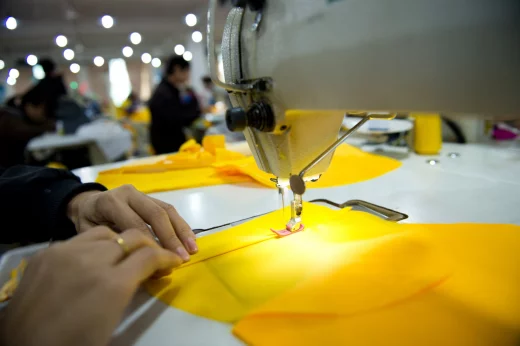
Print-on-demand
As an alternative to working with manufacturers, services like Printify allow you to quickly sell new designs without needing to deal with production and handling.
They give you less control over the final product (and the costs are generally higher for big volumes) but you can sell decent prints and fulfill directly to the buyers hassle-free.
5. Pricing
Most people think that the price of a product includes the cost of materials, production, shipping, and taxes. However, in reality there are many other things that you need to think of when pricing your products.
Marketing costs. These are the costs you need to incur to promote your merch and make a sale.
Naturally, the price of the product should be higher than the marketing costs so you don’t lose money. Marketing costs can fluctuate, so it’s hard to ascertain a fixed amount in the beginning. However, you can always update the price in the future to get positive ROIs.
If you’re an influencer, marketing costs are generally lower as compared to a brand because you already have an audience and you don’t need to pay for ads.
Labor costs. If you hire people to do marketing or design on a regular basis, you need to pay them. You also need to include this in the product price.
Sales volume. Marketing and labor costs are fixed which means that you’ll have to pay for these expenses no matter how many units you sell. If your sales volume is low but you’re spending a lot on marketing and labor, you’ll have to raise your prices to cover your costs. Similarly, if sales volume is higher, you can easily lower your prices because sales in high quantities will cover fixed expenses.
6. Create a website
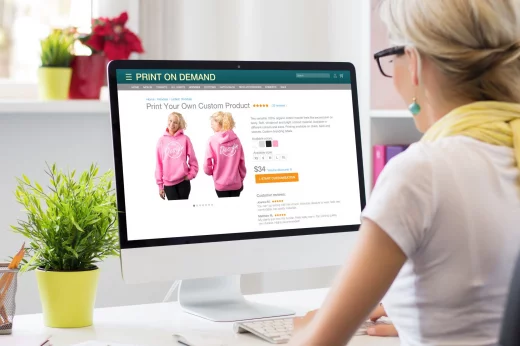
There are many ways to do this. If your design requirements are not super extensive, you can easily set up an online merch store using drag-and-drop platforms like Gumroad or Shopify.
Gumroad is designed especially for influencers who want to open a quick and easy merch store. Shopify, on the other hand, offers a full range of e-commerce website features, add-ons and ready-made websites that even big enterprises can use.
If you work with a web-designer, they’ll probably prefer Shopify over Gumroad due to its popularity and development features.
Get a domain
Get a domain name from GoDaddy or Bluehost. GoDaddy is relatively cheaper because it offers the bare minimum of getting a domain name. Bluehost has more features that might come handy in the long-run.
Note that domains can also be acquired directly on Shopify. If you choose to get a domain on GoDaddy, you can always link it to your Shopify store as well.
Design Your Website
One can design their own website or hire someone to do it. If you use Shopify or Gumroad, the process is quite simple and you can use templates made by professionals to create your own website.
However, if you hire someone else to do it, make sure they use a platform that makes it easy to add products so that you can continue configuring the website in the future.
Add Your Merchandise
Your website should have high-quality photos of models (or yourself) wearing your merch. Also, craft high-conversion copy on your product descriptions. A well-done site increases conversion rates.
Don’t forget to add some UGC content on your product pages such as reviews and videos from real people purchasing your products.
7. Start selling
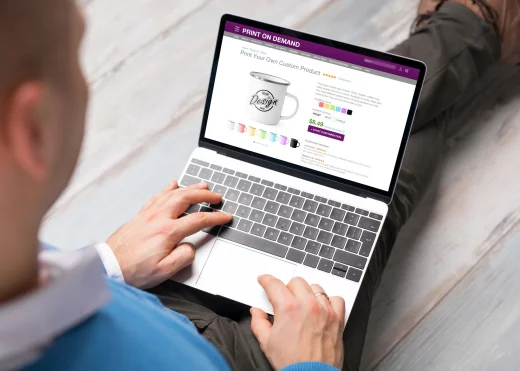
Once your merch is ready, it’s time to promote and sell it. If you’re an influencer, start telling people about your merchandise but in a non-salesy way. People should be happy to buy your merch (and shouldn’t be forced to do so).
Here are some other ways to boost your sales.
Collaborate with others
Collaborate with other social media influencers on platforms like Paysenger. This will give you access to their audiences and grow your following.
Maintain frequency
Frequently create content promoting your merch so that people don’t forget about it. Even if someone sees your ad and doesn’t make a purchase today doesn’t mean they won’t do it tomorrow!
Spread your merch across the internet
Instead of having your products on one official store, put them on third-party platforms like Etsy and Amazon as well. If you have a new site, it probably won’t show up on Google search results in its first few months.
However, Amazon has great search-engine optimization. If someone is looking for your products, they can easily find you on Google.
Sell at events
Don’t be shy to show off your merch in person. Participate in events and get your own merch stall at conferences, events, and festivals.
Conclusion: Making Your Merch Dream a Reality
Using your brand identity over merchandise can be great for building and monetizing a brand. Remember to be honest with your brand, choose quality products and suppliers, and promote your merchandise to reach your target audience for effective sales through merchandise.
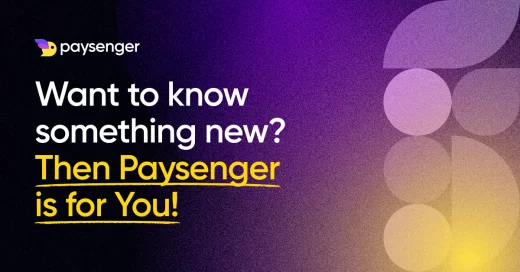
Join Paysenger to get a boost on your content creator journey. Become an influencer and build a loyal community of fans, sponsors, and collaborators.
Earn cryptocurrency for creating viral content and turn your hobby into a steady source of income. Become an early adopter today so you don’t miss out on the life-changing opportunities.
